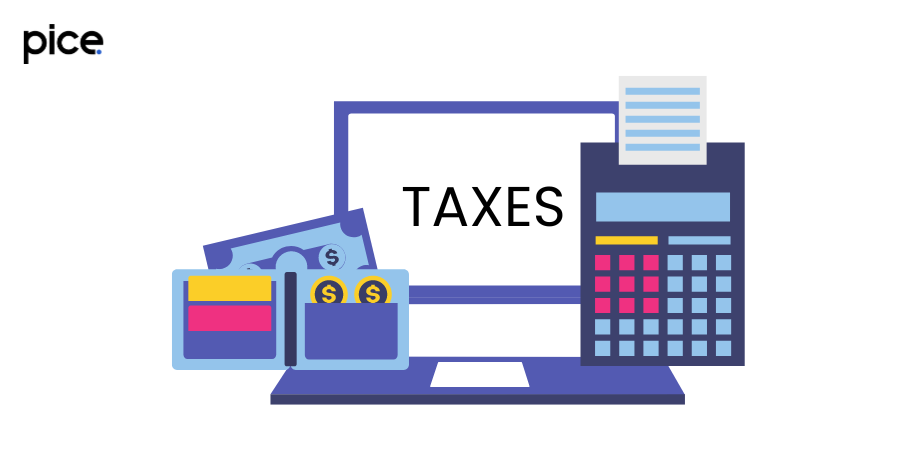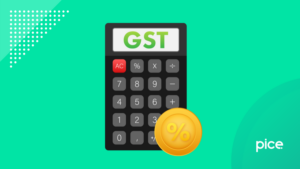Interest Calculator in GSTR-3B Explained
- 25 Aug 24
- 13 mins

Interest Calculator in GSTR-3B Explained
- What Is the Interest Calculator in GSTR-3B Functionality?
- What Is Interest Under GSTR?
- What are the Late Fees for GSTR-3B?
- How to Use the GST Return Late Fee Calculator?
- GST Interest and Late Fees Calculation on GST Returns
- Interest on Late Payment of GST
- Maximum Late Fee for GSTR 3B
- Interest on Delayed Monthly Tax Payment
- Features of New Functionality: Interest Calculator in GSTR-3B
- Computation of Interest for Delayed Monthly Tax Payment
- New Features in GSTR-3B
- Changes in GSTR-3B User Experience
- Conclusion
Key Takeaways
- Interest Calculator Introduction: The GST interest calculator in GSTR-3B simplifies the calculation of interest on delayed tax payments.
- Accurate Interest Computation: Taxpayers can effortlessly compute interest on overdue payments using the data entered in GSTR-3B.
- Late Fees Structure: Late fees for GSTR-3B filing are ₹50 per day for normal returns and ₹20 per day for nil returns.
- Enhanced User Experience: The updates to GSTR-3B streamline tax reporting, ensuring accurate compliance and user convenience.
Navigating the complexities of GST regulations requires taxpayers to handle interest payments on delayed GST liability with precision. Accurate calculation of interest is essential for all taxpayers to fulfil their interest liabilities through GSTR-3B. To assist taxpayers in this regard, the Goods and Services Tax Network has introduced the interest calculator functionality in GSTR-3B.
In this blog, we will walk you through how to calculate interest on GSTR-3B, highlighting the new functionality of the Interest Calculator for delayed tax payments.
What Is the Interest Calculator in GSTR-3B Functionality?

Since the introduction of the GSTIN network, the IT infrastructure supporting the indirect tax regime has undergone significant advancements. One notable addition is the GST interest calculator, which simplifies the calculation of interest for belated tax payments. This tool plays a crucial role in ensuring accurate assessments and facilitating streamlined financial transactions for businesses.
Thanks to the GST interest calculator, taxpayers can now effortlessly compute the interest payable on overdue tax payments using the data entered in GSTR-3B for a particular tax period. The interest calculation will be based on the late payment of net output tax liability, which is the tax amount paid through debit to the electronic cash ledger. This interest on late payments will appear in the GSTR-3B of the following period.
What Is Interest Under GSTR?
Every person who has registered for GST is required to submit their returns by the deadlines set by the tax authorities, as per GST laws and regulations. This requirement applies even if there is no business activity, in which case taxpayers must file nil returns.
In case taxpayers miss these due dates, they must pay a late fee along with interest when filing their returns. Failure to pay taxes on time will result in an interest charge of 18% per annum, calculated for each day beyond the due date.
What are the Late Fees for GSTR-3B?
A late fee is imposed for filing GSTR-3B of a tax period after the due date. The late fee structure depends on whether the return is a normal GSTR-3B return or a nil return. For normal returns, the late fee is ₹50 per day of delay. For taxpayers with nil tax liability for the month, the late fee is reduced to ₹20 per day of delay.
How to Use the GST Return Late Fee Calculator?
Here is a step-by-step guide you need to follow with due diligence in order to use a GST Return Late Fee Calculator.
Step 1: Choose the specific month and year for which you need to file your GSTR-3B return. This determines the period for which the return is considered overdue.
Step 2: Enter the date when you plan to file your return. This is crucial for calculating the late fee accurately.
Step 3: Enter the total tax liability from your outward supplies and output tax liability (sales) based on your financial records.
Step 4: Input the total amount of input tax credit (purchases) you have claimed as per your books.
Once all the information is entered, click the 'Calculate' button to instantly obtain the late fee amount, interest amount and total payable amount.
GST Interest and Late Fees Calculation on GST Returns
Let us find out step-by-step how interest and late fee calculations for GSTR-3B work on the portal.
- When filing form GSTR-3B online, taxpayers declare all current and past quarter output tax liabilities along with eligible input tax credits. They can then proceed to settle their GST obligations.
- Once the taxpayer has settled their liability, they gain access to view the ‘Tax Liability Breakup, As Applicable’ button on the GST portal.
- By clicking this button, taxpayers can declare the breakdown of their paid GST liability by period. Further, they can report this breakdown, ensuring that the total sum of all periods matches the total GST liability paid for that return.
- After declaring and saving the information, the taxpayer can proceed to file the return.
- Late fines and interest on overdue tax payments will automatically appear in the subsequent period's return after it has been filed.
- Interest under the CGST Act, 2017, Section 50, is automatically calculated and shown in Table 5.1 of GSTR-3B as ‘Interest and Late Fee for the Previous Tax Period’. The corresponding cells display the total interest amount calculated for each tax period.
- Taxpayers can review the automatically computed interest values in GSTR-3B and make adjustments if needed. Changing the value of interest prompts a system warning and highlights the interest cell in red. Despite the warning, taxpayers can proceed with filing the return.
Penalty for Filing Late Return

As per the GST Acts, late fees must be paid separately under both the CGST (Central Goods and Services Tax) and SGST (State Goods and Services Tax) Acts for intrastate supplies. Interest and late fees on GST returns are calculated based on the type of return filed.
- In case of normal returns:
| Name of the Act | Late Fees |
| Central Goods and Services Act, 2017 | ₹25 |
| Respective State Goods and Services Act, 2017 (or) Union Territory Goods and Services Act, 2017 | ₹25 |
| Total late fees to be paid per day | ₹50 |
- In case of nil returns:
| Name of the Act | Late Fees |
| Central Goods and Services Act, 2017 | ₹10 |
| Respective State Goods and Services Act, 2017 (or) Union Territory Goods and Services Act, 2017 | ₹10 |
| Total late fees to be paid per day | ₹20 |
For instance, if the due date for filing GSTR-3B is June 20th and a business files on June 25th, they would incur a late fee of ₹250 for a normal return (5 days * ₹50/day). Similarly, if a taxpayer with no tax liability files their return on June 25th, the late fee would be ₹100 (5 days * ₹20/day).
Interest on Late Payment of GST
The interest applicable on late GST payments is calculated based on the number of days between the due date and the actual payment date. Suppose a taxpayer has a tax liability of ₹50,000 and makes the payment on July 10th instead of the due date of June 20th, they will incur interest for the 20-day delay.
In this case, the interest is calculated using this formula: (Amount × 18% × Number of days of delay)/365 days. The interest would amount to approximately ₹493.
Maximum Late Fee for GSTR 3B
Let us determine the maximum late fees chargeable as per the notifications CGST 19/2021, 20/2021, and 21/2021 dated June 1, 2021.
| Type of Return | Annual Turnover in Previous Year | Maximum Late Fee Under CGST | Maximum Late Fee Under SGST | Maximum Late Fee |
| Nil return | NA | ₹250 | ₹250 | ₹500 |
| Other than Nil return | Up to ₹1.5 crore | ₹1,000 | ₹1,000 | ₹2,000 |
| Between ₹1.5 crore and ₹5 crore | ₹2,500 | ₹2,500 | ₹5,000 | |
| More than ₹5 crore | ₹5,000 | ₹5,000 | ₹10,000 |
Interest on Delayed Monthly Tax Payment
Late payment of GST incurs annual interest charges, applicable when payments are delayed or when there are erroneous claims of excess Input Tax Credit (ITC) or reductions in output tax liability. The interest rate is 18% per annum for delayed payments and rises to 24% per annum for cases involving excess ITC or reduced output tax liability.
Features of New Functionality: Interest Calculator in GSTR-3B
To assist taxpayers with self-assessment, an interest calculator with new functionality features is introduced in GSTR-3B.
- This new functionality will calculate the minimum interest based on the values declared by taxpayers in GSTR-3B for a specific tax period, supporting the technology backbone of the indirect tax system.
- The interest calculator's user-friendly interface guides taxpayers on how to compute interest for each tax head.
- It helps taxpayers accurately compute interest for past period liabilities declared in the current tax period's GSTR-3B, based on the details they provide on the portal.
Computation of Interest for Delayed Monthly Tax Payment

The interest calculator in GSTR-3B computes the minimum interest based on the values declared by taxpayers for a specific tax period. This system-computed interest will be auto-populated in Table 5.1 of GSTR-3B for the next tax period, similar to the process of calculating the late fees. This interest value auto-populated in the next GSTR-3B return, will be kept editable.
Interest Liability
When dealing with GST return payments, interest liability can arise in one or both of the following scenarios:
- Delayed Filing of Return
If the current GSTR-3B is filed after the due date, interest will be charged at the prescribed rate from the due date of GSTR-3B for that period until the date of filing the return.
- Delayed Declaration of Liability
If the liability from previous tax periods is settled in the current GSTR-3B, interest will be charged from the due date of the return for those previous periods until the date the liability is declared in the return.
New Features in GSTR-3B
The introduction of the Interest Calculator for delayed monthly tax payments brings a host of new features to GSTR-3B. Some of these features are discussed below.
- Tax Liability Break-up (Voluntary) Button in GSTR-3B
With the latest update, GSTR-3B now features a ‘Tax Liability Break-up (Voluntary)’ button. Displayed on the payment page below Table 6.1 – Payment of Tax, this button lets taxpayers provide a detailed breakdown of their tax liability by period.
This button appears only after you click the ‘Make Payment/Post Credit to Ledger’ button. This means taxpayers can access a detailed breakdown of their tax liability by period only after settling the payment for the current period.
Clicking this button gives taxpayers the option to declare a period-wise break-up of their discharged tax liability in GSTR-3B. They can specify values for each tax head, ensuring that the total matches the tax liability paid in the GSTR-3B.
- Auto-Population of System Computed Interest in Next GSTR-3B
Upon submission of Form GSTR-3B, the new system will compute the interest liability using the values declared, following the amended provisions of Section 50 of the Act. It will determine interest for each tax period using the following formula:
Interest Liability = Tax liability × (Days overdue till the actual day of filing / Total days in the year) × Rate of interest
The new system will calculate this interest liability separately based on the number of periods declared in the tax-period-wise breakdown by the taxpayer. Furthermore, it will sum up the interest values for different periods to compute the total interest liability for each tax head.
- New Information in GSTR-3B Filing
Once the taxpayer successfully files the form, they can download a PDF of the filed GSTR-3B generated by the system. This PDF includes system-computed interest details, if applicable, for that GSTR-3B. It provides head-wise information on the computation of interest for all tax periods where interest is applicable, in addition to the existing information displayed.
- Auto-Population of Interest
The interest values calculated earlier will automatically appear in Table 5.1 – Interest and Late Fee for the previous tax period of the next GSTR-3B. To view the breakdown and details of interest computation, users can click on the ‘System Generated GSTR-3B’ button on this page.
Changes in GSTR-3B User Experience
In addition to enhancing user convenience, the latest updates to GSTR-3B streamline tax reporting and help taxpayers ensure accurate compliance with GST regulations.
Taxpayers Filing On or Before Due Date of GSTR-3B
Once the interest calculator becomes enabled on the GST Portal, taxpayers filing their returns on or before the due date will experience no changes in their user experience. In this case, taxpayers will continue to have the option to provide a breakdown of liability for past periods.
Taxpayer Filing GSTR-3B After Due Date
For taxpayers filing after the due date, a pop-up will prompt them to declare tax-period-wise tax liability, if applicable:
- If they have tax liability from previous periods to declare, they can do so.
- If entire liability pertains to the current period, they can ignore the pop-up and proceed with filing.
- In case the taxpayer does not declare any previous period tax liability, the system will compute interest assuming that the entire tax liability pertains to the current period by default.
Conclusion
The introduction of the Interest Calculator in GSTR-3B has proven invaluable for registered taxpayers, enabling precise calculation of interest on delayed GST payments, thereby ensuring compliance and preventing penalties. Using this tool enables taxpayers to facilitate seamless filing and understand how to calculate interest on GSTR-3B correctly.
💡 If you want to pay your GST with credit card, then download Pice Business Payment App. Pice is the one stop app for all paying all your business expenses.
 By
By 

















